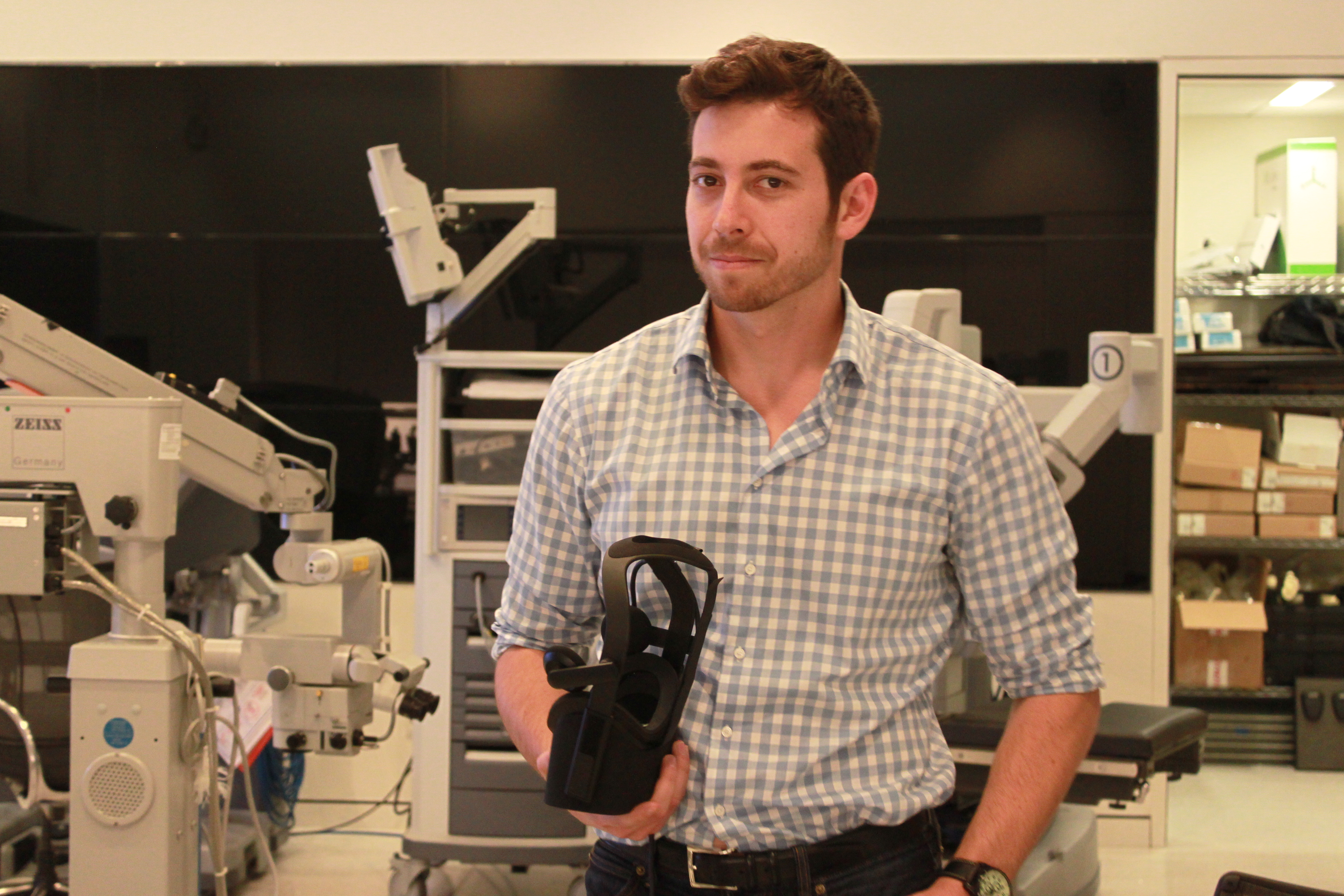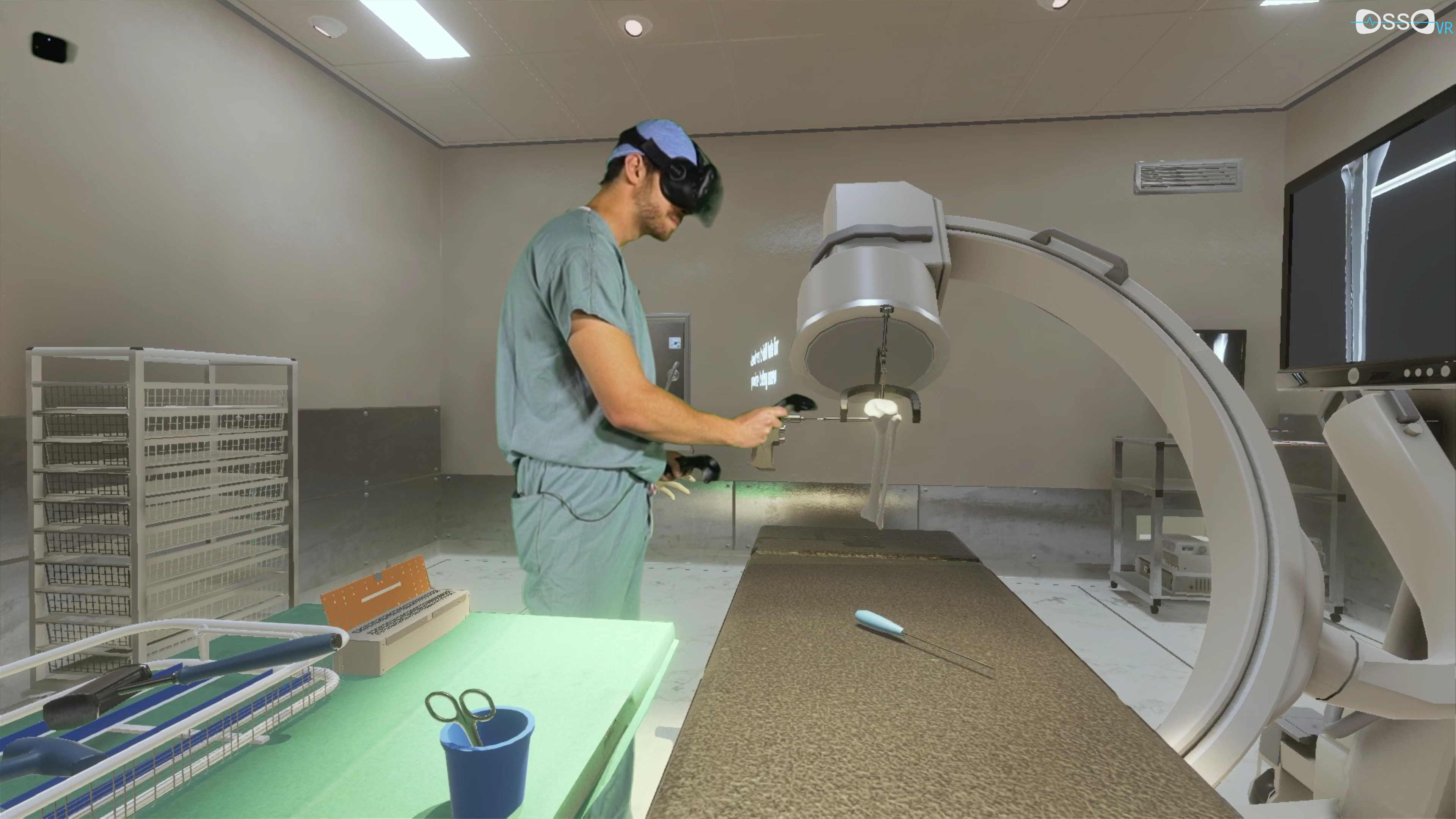Learning how to use a new surgical device is no game. That doesn’t necessarily mean that the skills and tactics driving gaming culture can’t be incorporated into the learning process.
That thesis provides the underlying philosophy of the company Osso VR. The fast-rising startup employs virtual reality to change the training paradigm for healthcare professionals. The plan is to let surgeons and their colleagues in the OR become acquainted with new devices through realistic simulations.
The company has its genesis in gaps noticed by Justin Barad, MD, co-founder and CEO of Osso VR. Tracing his professional history as “former aspiring game developer turned bioengineer turned orthopedic surgeon,” Barad explains the limitations he encountered as a resident stirred his first inkling that technology could be put in service of training physicians.
“Every day I saw there were no real options to learn how to use new medical technology,” says Barad. “We’d have a patient come in and we’d want to use some kind of device that would be very helpful for them. But we had no access to an ability to learn to use that device other than the traditional course model.”
In current training protocols, surgeons travel to participate in coursework sponsored by the device manufacturer. In addition to the significant imposition on the physician’s time, the sporadic availability of training sessions demolishes any attempts at strategic scheduling.
“The problem is that the gap between that course and actual patient use can often extend up to four to six months,” Barad points out. “I like to say it’s like studying for a test once and then taking that test six months later with no real opportunity to practice or reinforce the training in between.”

Justin Barad, MD, co-founder and CEO of Osso VR. (Image credit: Osso VR)
Barad’s epiphany was to switch the flow. Instead of bringing surgeons to the training, virtual reality offered the possibility of bringing training to the surgeons.
After putting together a prototype, Barad partnered with Matt Newport, a veteran of the video game industry. Together, they founded Osso VR.
The Osso VR team creates modules drawn from actual CAD files of new devices, working in consultation with an internal team of surgeons and clinical experts to ensure the finished product conveys techniques accurately.
Physicians and other healthcare staff can then train on the new devices using a system that includes a headset and two handheld controllers. The system tracks the user’s hand movements as they perform procedures on virtual patients. At the end, there is feedback on decision points and a score to help measure progress in learning.
Barad says the Osso VR approach can help surgeons get extensive practice using a device before they ever employ it in a live procedure, keeping patients on the ideal part of the learning curve.
“In the world of education there’s this concept of spaced repetition — that doing something repeatedly over a long period of time is by far the most effective way to learn,” explains Barad. “Not only that, but when you’re comparing observation vs. hands-on learning, hands-on trumps observation by far. This is where you’re actually doing an activity yourself as opposed to just watching someone else or a video of said activity. So what we’re able to do is allow people to get hands-on practice with these procedures in a repetitive manner.”

The Osso VR in use. (Image credit: Osso VR)
The quicker surgeons can get to a point at which using a device is driven by familiarity and muscle memory as much or more than cognitive attention, the sooner they’re able to free up their attention to concentrate on the case in front of them.
That aspiration extends to every member of the surgical staff.
“It’s a team sport and everybody needs to learn a specific system,” Barad says. “It’s not just the surgeon. The problem is, if the surgeon is the only one who knows how to use a device, everyone looks to him to figure out what their job is, and that distracts him from the patient and makes the overall case longer.”
The team will eventually figure out how to use a device collectively, but there’s nothing systematic about that learning. And further compromise is built into the scenario when certain members of the team are removed, because of shift changes or other reasons. Osso VR addresses these issues by providing an easy way to make certain everyone is up to speed with new equipment.
Barad acknowledges invocations of the gaming world might be off-putting to purists who confuse the frivolity of Candy Crush with the complexities of an educational platform such as Osso VR. He addresses the concern directly.
“We’re taking a new, creative approach in how we present this material to people,” Barad says. “But at the same time, while the approach is drawn from the world of gaming, we’re very serious about this activity. When we’re recruiting people for the company, when they ask about what’s most important for us, the first thing we always say is: ‘Patient safety.’”




